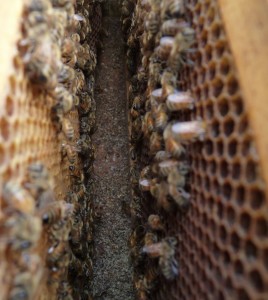Lugnasa Garlic Planting Moon
Animal ironies.
5 years ago when we put in the orchard Vega and Rigel took it upon themselves to shred the netaphim irrigation system. We built a fence around the orchard to keep them out. This was around the time I installed an electric fence to keep Rigel inside the chain link fence that goes all round our woods and most of our property.
Of late, squirrels have taken to jumping off a small ash, onto the top run of the split rail fence and from there on to our honeycrisp tree. This was the first year the tree produced much fruit and we anticipated them. So did the squirrels. I saw one squirrel, with an apple twice as big as his head, leap from the apple tree onto the rail, from the rail onto the ash, all the time carrying this huge apple. After that he disappeared among the oaks.
Also, this year seems to be a gopher year. They come in waves, some years almost none, others they seem to be everywhere. This is an everywhere year. In pursuit (I think) of the underground rodent, Vega and Rigel have decided to join local 147 of the Sandhogs after seeing this picture and admiring the work of their NYC brethren.
They’re hoping for new tunneling tips from their brothers.
Also, yesterday Kate took Gertie, our German shorthair into the vet. Her left rear leg had not gotten better after a course of antibiotics to eliminate a possible Rocky Mountain Spotted fever infection. Gertie began her doggy life running around in the Rocky Mountains outside of Denver.
New diagnosis, confirmed on X-ray? Spinal stenosis effecting the 10th vertebrae. Just like her mommy. She’s now on a course of steroids to shrink the swelling, hopefully in a month or so.
One last animal irony. After my decision a year ago to shift bee management practices, taking only the honey the bees could produce in a year, rather than trying to overwinter the colonies, I have been forced–by the bees–back to the U’s original management  strategy.
strategy.
That is, buy packaged bees one year. Watch over them and help them thrive. Make sure they have enough honey to survive the winter. Divide them the next spring, take all the honey from the parent colony and repeat the process with the child colonies.
Once the bees educated me to the soundness of this strategy I can now declare this year a success since I believe both colonies will go into the winter with sufficient honey. So much for my plans. Bees laugh at the plans of man.
